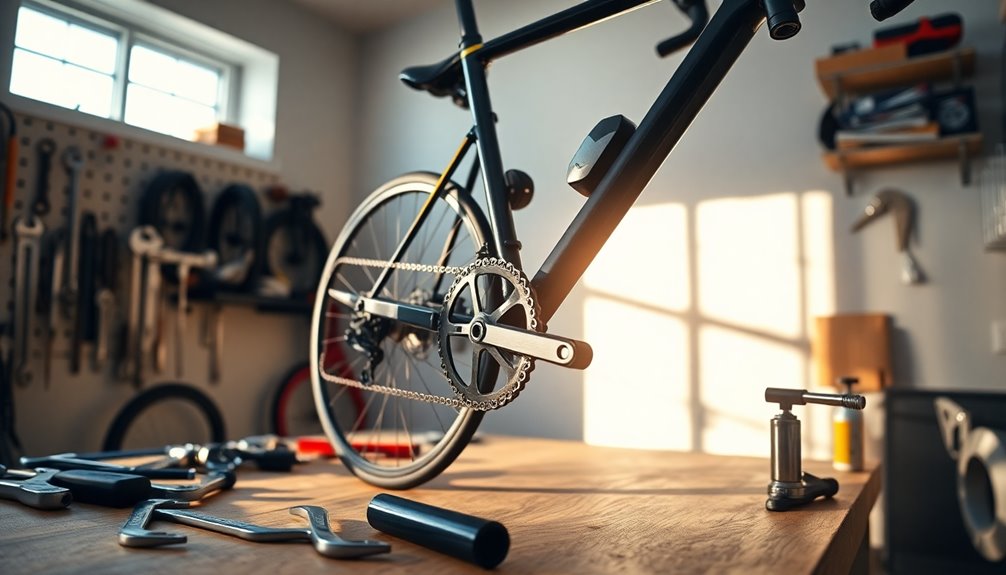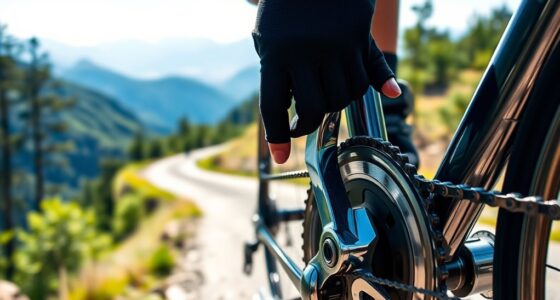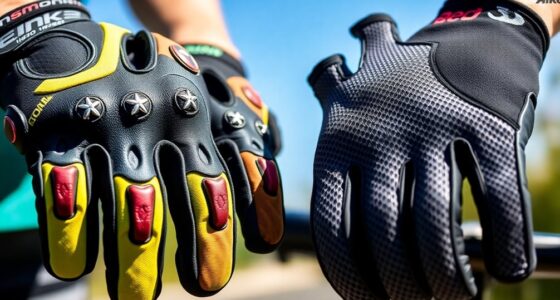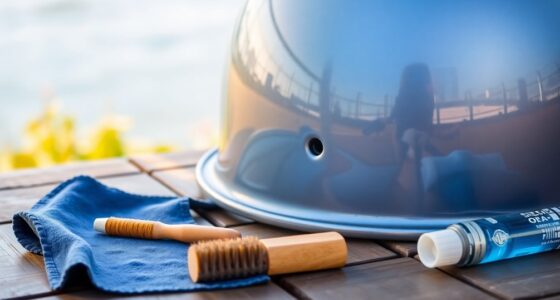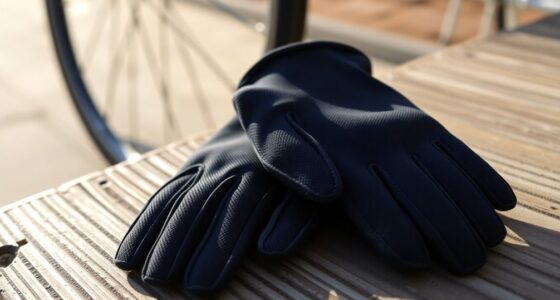To maintain your bike, you'll need some essential tools like a multi-tool, tire levers, and a reliable pump. Always perform a quick safety check before rides by inspecting tires, brakes, and wheels. Keep your bike clean and lubricated to guarantee peak performance, adjusting brakes and gears as needed. It's helpful to learn how to fix common issues like flats. If you keep going, you'll discover plenty of tips to enhance your bike maintenance skills.
Key Takeaways
- Perform a safety check before each ride, inspecting tires, brakes, and quick releases to ensure everything is secure and functioning properly.
- Keep your bike clean by washing it weekly and lubricating the chain to prevent rust and ensure smooth operation.
- Learn to adjust brakes and gears using barrel adjusters to maintain optimal performance and prolong component life.
- Carry essential tools like a multi-tool, tire levers, and a pump to handle common issues like flat tires on the go.
- Attend local bike maintenance workshops to enhance your skills and confidence in performing basic repairs and adjustments.
Essential Tools for Bike Maintenance
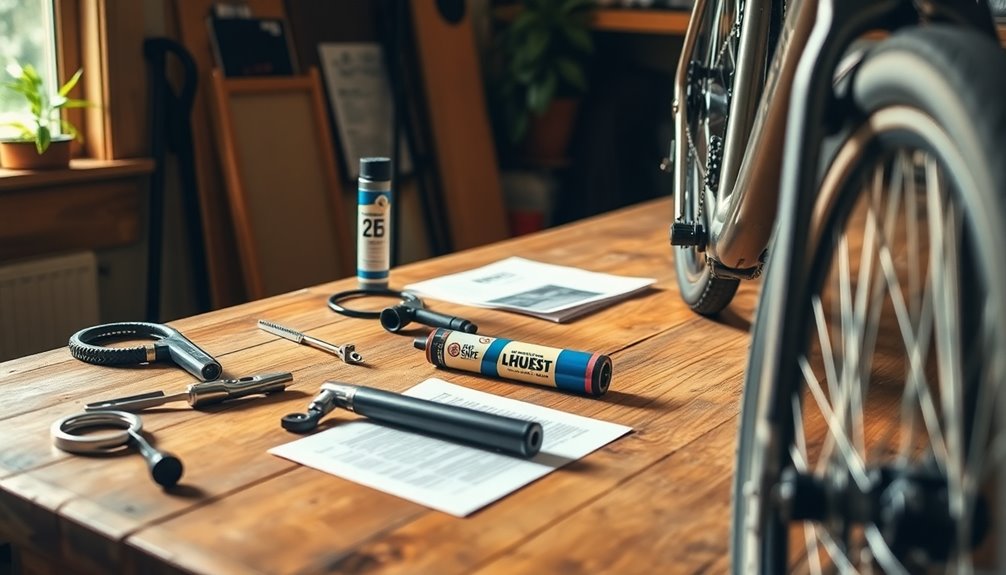
When it comes to maintaining your bike, having the right tools can make all the difference. You'll want a solid multi-tool that includes various hex keys for making adjustments without rounding bolts. A reliable bike pump is essential, ensuring you can inflate your tires when needed.
Don't forget tire levers; they're vital for quick tube changes during flat repairs. Consider adding a torque wrench to your toolkit, so you can tighten bolts without causing damage. A chain breaker tool should also be on your list for fixing or replacing a damaged chain.
Regularly check your tools, ensuring your pump works and your tire levers are in good condition. Being prepared will save you time and hassle on the road.
Performing a Safety Check Before Every Ride
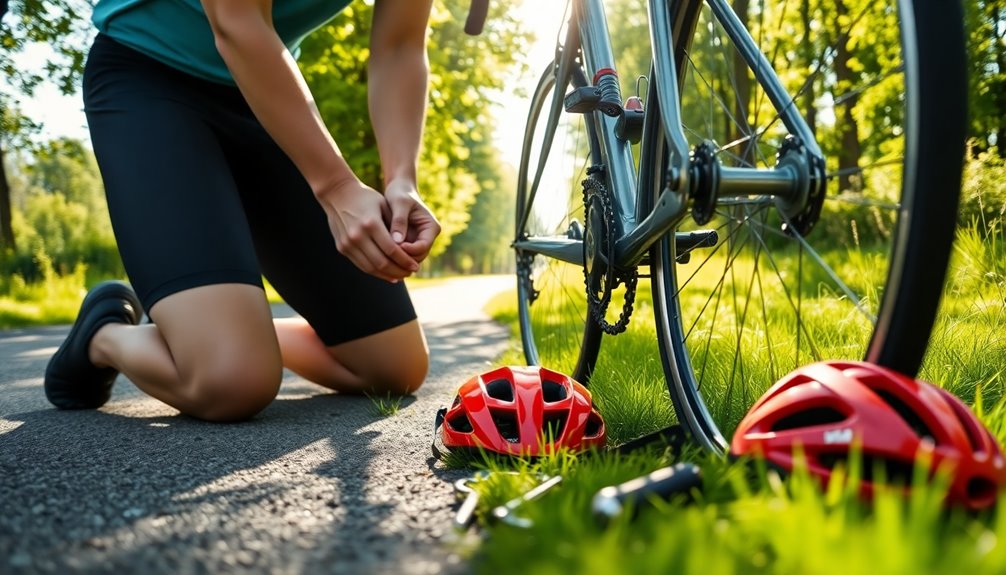
Having the right tools sets you up for successful bike maintenance, but it's equally important to perform a safety check before every ride.
Start by inspecting your tires for wear and cuts, inflating them to the recommended pressure to prevent flats.
Next, check the stability of your headset by squeezing the front brake and rocking the handlebars; there shouldn't be any looseness.
Verify the quick releases on both wheels are tight to avoid accidents.
Then, test your brake functionality by squeezing the levers and trying to roll the bike forward—make sure they engage properly.
Finally, lift your bike and spin the wheels to confirm they rotate freely, without any contact from the brake pads.
This safety check is essential for a smooth ride.
Keeping Your Bike Clean and Lubricated
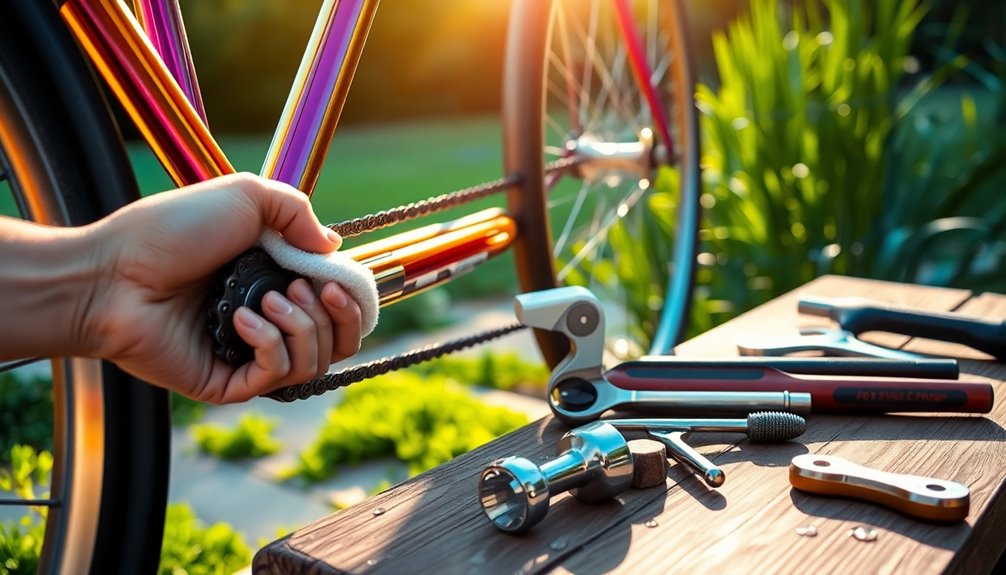
To keep your bike in top shape, regular cleaning and lubrication are essential. Aim to clean your bike at least weekly during summer and after each winter ride to prevent dirt buildup and drivetrain wear.
Use a gentle degreaser and a brush to clean the chain, gears, and brakes, avoiding high-pressure washers that could damage components. After cleaning, apply chain lube to the bottom of the chain while rotating the pedals for even distribution. Wipe off any excess lube to prevent dirt accumulation.
A well-lubricated chain should glisten without excessive sheen, indicating the right amount of lubricant. Consistent maintenance not only extends the lifespan of your bike but also enhances your overall riding performance.
Adjusting Brakes and Gears
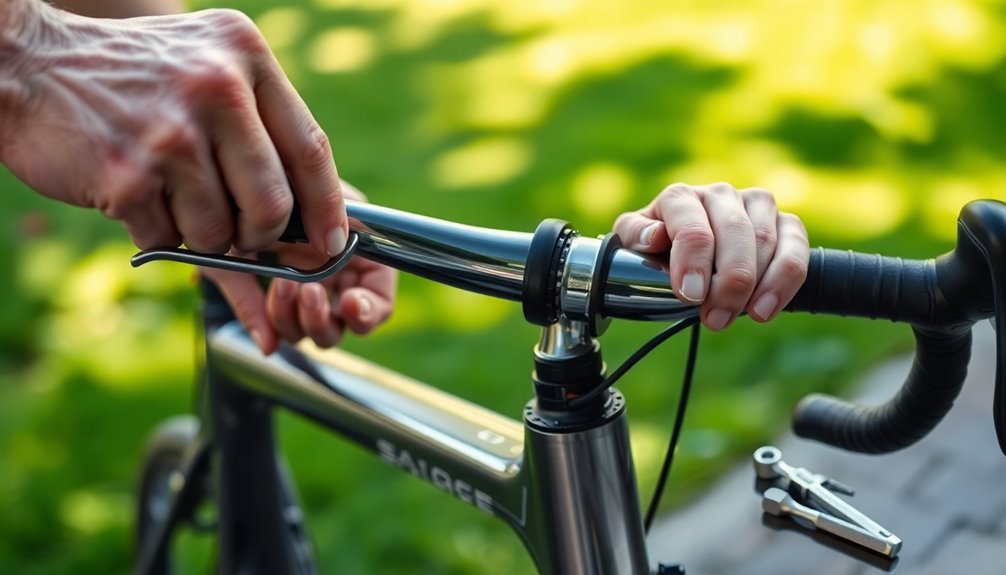
Regularly adjusting your bike's brakes and gears is essential for a smooth and safe ride.
Start by checking your brake pads for wear; replace them when they've less than 1mm of material left to maintain peak braking performance. Use the barrel adjuster to fine-tune your brake cable tension every 200 miles, guaranteeing responsive braking.
When it comes to gears, verify the rear derailleurs are properly aligned. Misalignment can cause poor shifting and annoying noise. Adjust this using the barrel adjuster on the derailleur or shifter.
Don't forget to check your chain for wear with a chain checker tool, and keep your derailleurs and cables clean and lubricated to prevent grime buildup and extend their lifespan.
Learning to Fix Common Issues
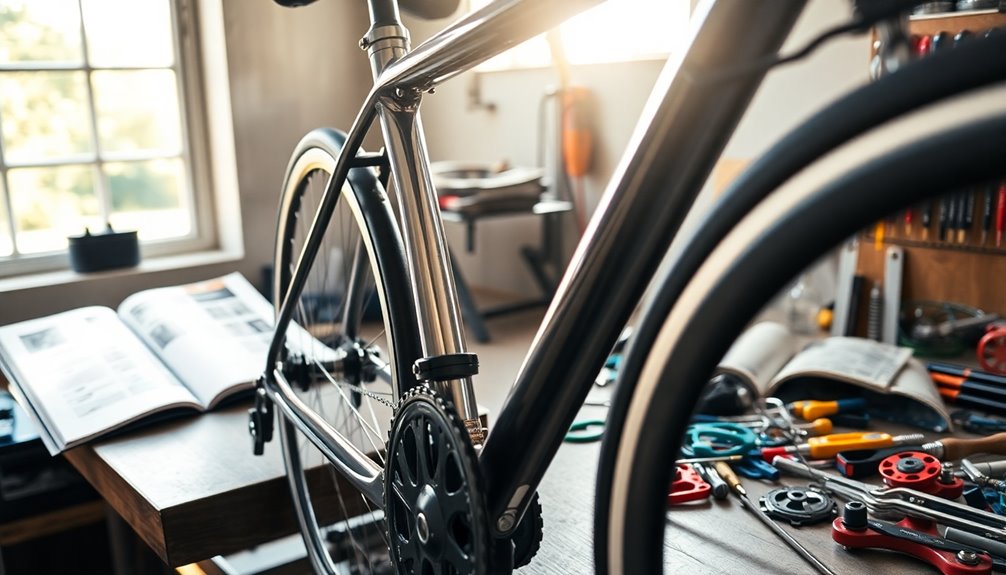
When you encounter common issues while riding, knowing how to fix them can save you time and frustration.
Here are three essential skills you should learn:
- Fix a flat: Always carry a spare inner tube, tire levers, and a pump. Practice at home to build confidence.
- Make small adjustments: Regularly adjust the tension of your brakes and derailleurs using barrel adjusters, especially every 200 miles. This guarantees smooth shifting and peak performance.
- Bike repair basics: Conduct an M-check before every ride to inspect tires, brakes, and the drivetrain for wear. Attend a local bike maintenance workshop to enhance your skills.
With these skills, you'll tackle issues confidently and keep your bike in top shape!
Frequently Asked Questions
How Do You Maintain a Bike for Beginners?
Think of your bike as a loyal friend; it needs care to keep going strong.
To maintain it, start with an M-check before each ride, looking at tires, brakes, and the drivetrain. Keep it clean, especially in winter.
Check tire pressure regularly—80-130 psi for road bikes and 30-50 psi for mountain bikes.
Remember to lube the chain every few weeks, and always carry essential tools for unexpected repairs.
Your bike will thank you!
What Regular Maintenance Should Be Done on a Bike?
To keep your bike in top shape, check the tire pressure before every ride, ensuring road tires are between 80-130 psi and mountain tires between 30-50 psi.
Clean and lubricate the chain every few weeks, inspecting brake functionality monthly.
Always perform an M-check to spot issues, and schedule a thorough inspection of all components every six months or after 2,500 miles.
These steps will help you ride safely and efficiently.
How Do You Balance a Bike for Beginners?
Imagine teetering on a tightrope, the wind howling; that's how it feels to balance a bike!
To find your groove, keep your body centered over the frame, and grip those handlebars lightly. Look straight ahead instead of down—your bike's got this!
Use smooth, gentle turns, and practice starting and stopping like a pro.
Check your tire pressure regularly; it's like giving your bike a little pep talk, ensuring you ride with confidence and control!
How to Maintain a Bicycle in Good Condition?
To keep your bicycle in good condition, regularly check your tire pressure and make certain it's within the recommended range for your bike type.
Clean and lubricate your chain every few weeks to minimize wear.
Before every ride, perform an M-check by inspecting key components like tires and brakes.
Don't forget to check your brake pads and schedule a professional servicing at least once a year to catch any potential issues early.
Conclusion
By taking the time to maintain your bike, you're not just keeping it in shape; you're nurturing a trusted companion for your adventures. Just like a well-tended garden blooms, your bike will perform better and last longer with regular care. So, grab those tools, perform your checks, and don't shy away from fixing what needs attention. With each ride, you'll feel the difference and enjoy the freedom that comes from a bike that's ready to roll.
